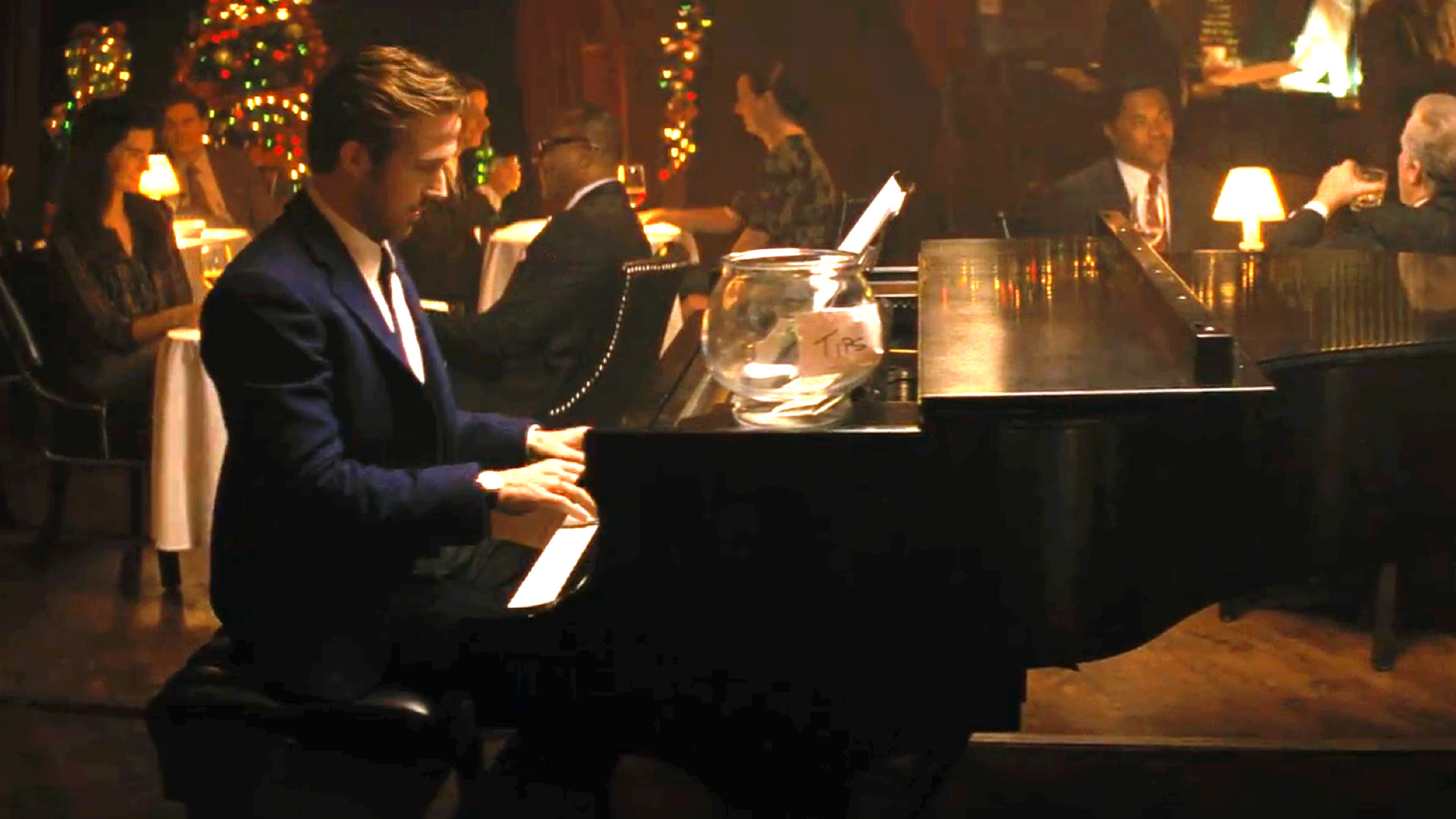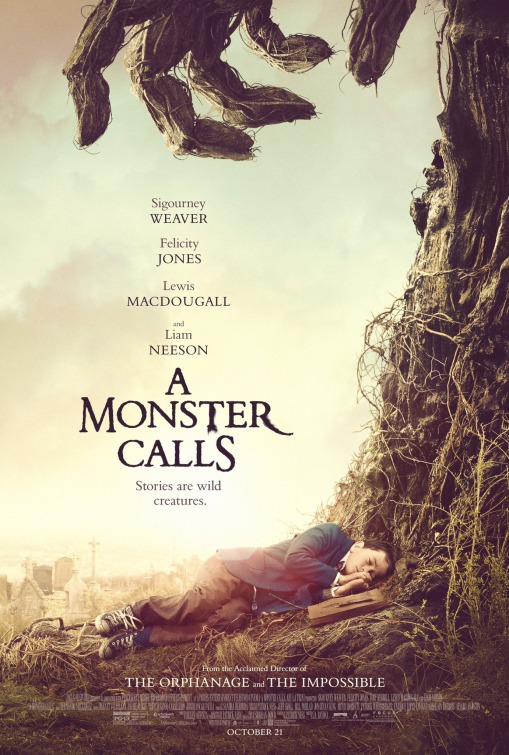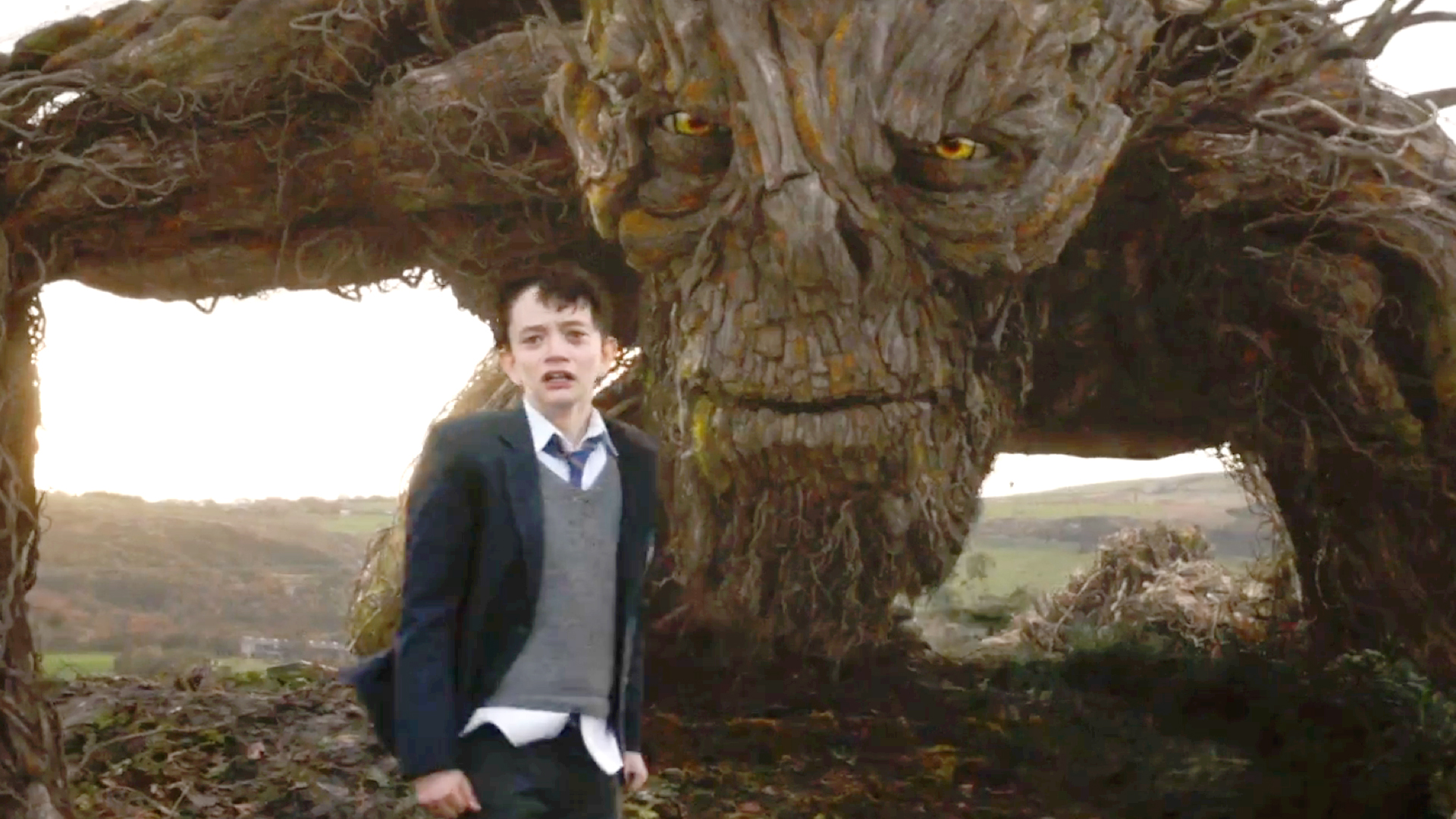La La Land proudly wears its influences on its sleeves. We open to a retro version of the Summit logo, in shaky black and white and 4:3 aspect ratio, before cutting to the bright blue technicolor sky, the 4:3 obscuring a word, which is revealed to be CinemaScope, complete in retro style font, as the film unfurls into full 16:9 widescreen glory. And just as we feel we have entered a film from another era we pan down the most 21st century thing imaginable. A traffic jam. A traffic jam followed a dance number shot in one take mind. Clearly, director Damien Chazelle wants to use key iconography to remind us of Hollywood past but also to tell a modern take on the movie musical format. The blood, sweat and tears of his previous effort (2014’s excellent and intense Whiplash) are replaced by sun-drenched settings, highly choreographed musical and dance numbers, fantasy sequences and a classic tale of romance, with a twist. It's clear to see why it has been such a hit with audiences and critics. It is obvious that time, love and effort has gone into making La La Land – the film is a passion project for Chazelle, who has been trying to get it made for years.
Mia (Emma Stone) is an aspiring actress, having tried to break into Hollywood for years, juggling auditions, a dull barista job and maintaining a social life with her friends. Sebastian (Ryan Gosling) is a dedicated and serious lover of jazz. He dreams of opening up his own bar, a sanctuary for the dying genre but is stuck working dead end jobs that dilute his integrity. Through a chance meeting, the pair get off to a rocky start but soon begin to fall in love. The couple navigate life's ups and downs as they start working towards their dreams, which threatens to rip them apart... The story has been told a thousand times before but it is the intensely likeable performances of the leads and the impeccable technique that makes La La Land into a very special film.
Chazelle’s ability to compose a scene is a sight to behold. To begin with, we have an incredible impressive one take musical number on a highway, which perfectly sets the tone for the film. Chazelle’s masterful direction is no more apparent than in the fantasy sequences. The best musicals use songs to forward the story and express the characters’ emotions. La La Land does one better by using fantasy sequences, in addition to the songs and clever use of diegetic/non-diegetic sound, to elevate the proceedings to visually and musically tell the story. The best sequence for this is towards the end of the film, where Sebastian begins to play their song on piano in a club years down the line, inciting at first memories from long ago before launching into an almost avant-garde sequence, showing what might have been for the couple if they could go back and do it differently. It's a risky move that works 100% in communicating the characters’ emotions just through images and music. However, when we do need to get more grounded, the film is not afraid to stripe back the musical excesses and concentrate on the two leads. Some of the films most powerful moments comes from the characters singing a delicate duet together or having a heated argument. When the things go rocky in the relationship, the film actually strips back completely on the musical numbers and dance sequences into a much more realistic style (the songs don't return until a key turning point in the story).
Outside of the direction, the second reason La La Land works so well is due to its two leads, Emma Stone and Ryan Gosling. These are the most prominent characters and are the audiences' prime attention – the side characters don't get much of a say (similar to Whiplash’s close examination of Miles Teller and J.K. Simmons’ relationship with each other). There is not a single ounce of cynicism in these performances and that might be one of the film’s greatest strengths. There is just this irresistible energy and positivity to both their performances, so it's easy to get sucked into their relationship and the dilemmas they must face. Emma Stone in particular stands out here – her wide eyed optimism makes it particularly hard to watch when she gets rejection after rejection from her coveted auditions. Playing an aspiring actor playing a character in an audition is a hard thing to do, yet Stone pulls it off flawlessly. Gosling as well is warm and funny, having only seen him in the ultra serious Nicolas Winding Refn films, taking a fairly obsessive character into an understandable and, at times, fairly tragic character.
So the other other large element of La La Land is, of course, the music. First of all, the dance choreography is second to none. I think there's a nice fusion between classic Hollywood and modern Broadway set up and execution to the musical numbers and it just comes together flawlessly. The biggest influence on the soundtrack is jazz of course and it's hard not to get caught up in Sebastian’s love for the genre – a great scene has him attempting to convert Mia to the art form, passionately describing how each instrument is at war with each other for dominance in the piece, creating something new and exciting every night (which makes it doubly tragic when he has to join a big band for financial reasons). I think Chazelle is using jazz to subtlety comment on the state of the movie musical genre - we can respect the innovators and love the classics all we want but ultimately we need to be looking forward to find new, respectful and exciting ways of keeping this genre alive. So that said , the songs are greatly infused with a jazz sensibility. While I don't think the songs are immediately memorable, I'm sure on repeated listens to the soundtrack they will begin to stick, as again the actors are giving it their all, singing sincerely. City of Stars is the stand out here, a quiet ballad that connects the two leads.
La La Land is truly a musical for the modern era. With its foot in the past, it also looks forward, using clever new techniques and a slightly modern sensibility to tell a classic story. Chazelle has come out as being something of a master craftsman, using creative lighting, wonderful sets, crafty cinematography and a subtle art design stuck between modern and classic Hollywood trappings. This helps to give La La Land universal appeal. Like jazz, the musical genre is not dead and films like La La Land remind us that there is still life in this classic format.
Rating: 9/10







